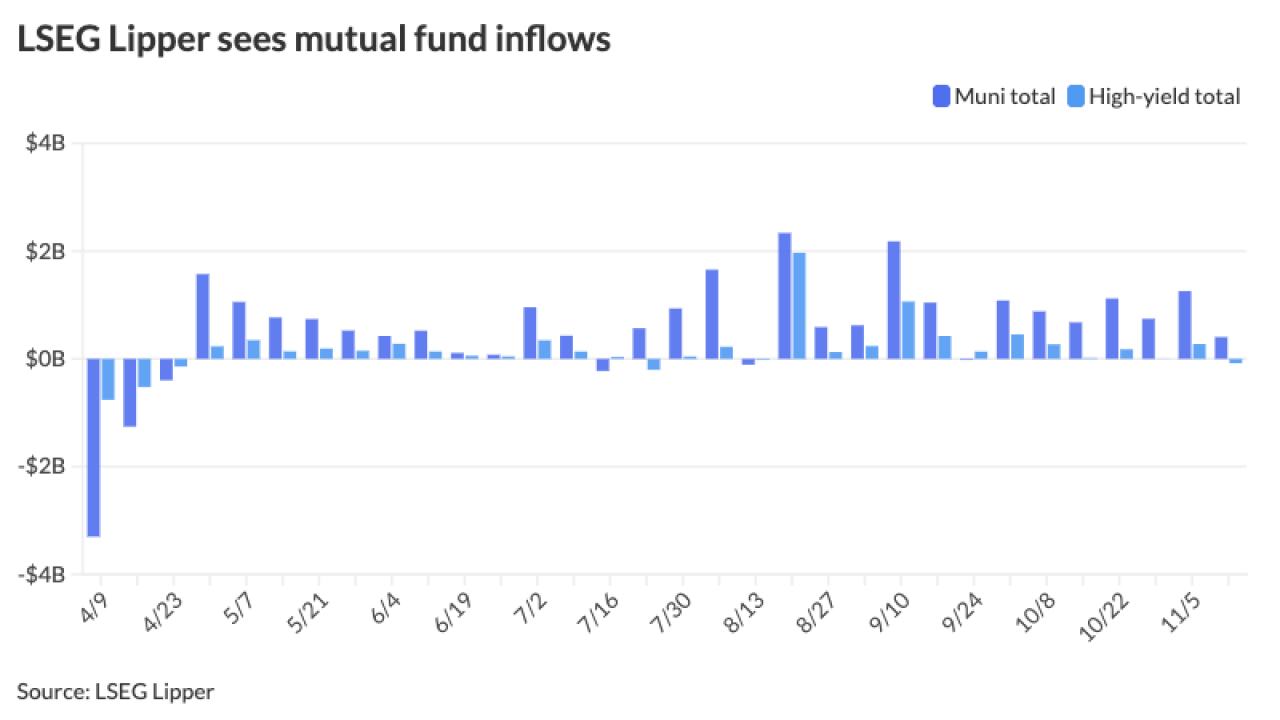New York State, which faces major financial uncertainty amid the ongoing COVID-19 pandemic, received its second credit hit in nine days Friday when Fitch Ratings revised its outlook to negative from stable.
Fitch affirmed New York ‘s AA-plus rating while concurrently changing its outlook on the state'a debt to negative citing potential for deep revenue drops as the state confronts an economic downturn driven by the virus.
“Fitch views the sudden economic shock brought by the pandemic and the severe recession now unfolding as being well beyond the routine cyclicality typically faced by state and local governments,” Fitch analyst Douglas Offerman wrote. “While New York has a track record of very strong operating performance, its ability to absorb the shock and maintain financial resilience will be tested by the depth and duration of the recession.”

Moody’s Investors Service also
The Fitch action applies to outstanding debt of $2.1 billion in outstanding general obligation bonds, $34.9 billion of personal income tax revenue bonds and $10.8 billion of state sales tax revenue bonds. The negative outlook also affects $2.5 billion in outstanding Local Government Assistance Corporation and Sales Tax Asset Receivable Corporation bonds as well as $1.2 billion in outstanding dedicated highway and bridge trust fund bonds.
Gov. Andrew Cuomo signed a $177 billion
The enacted budget authorizes $8 billion in short-term borrowing and access for a $3 billion line of credit to combat expected liquidity struggles from the tax-filing deadline getting extended by three months until July 15. Offerman said that the
The 2021 budget anticipated $9.2 billion in state PIT receipts in April, which Offerman said is equal to 11% of what was forecasted in the new fiscal year. He said the temporary liquidity crunch from the PIT revenue now arriving in July will be further aggravated from job losses and "stay-at-home" restrictions that cut down on sales tax collections.
New York will receive some other federal assistance from recently approved congressional bills, but the full extent of the funds will assist the state with its fiscal challenges are unknown, according to Offerman. The Families First Coronavirus Response Act could provide New York an estimated $6.7 billion federal aid over the next year with the full value of the assistance predicated on state Medicaid spending, according to the Center on Budget and Policy Priorities.
New York is also eligible for $7.5 billion of federal aid under the Coronavirus Aid, Relief and Economic Security Act of which at least $4.1 billion would be allocated for the state and up to $3.4 billion for municipalities that have populations above 500,000.
“Liquidity at the close of fiscal 2020 and in the new fiscal year is being severely affected by the pandemic and by actions taken in response, particularly by the delay in tax filing to July 15,” Offerman said. “As one of the global epicenters of the pandemic, New York has borne considerable direct emergency response costs, which will continue to rise as the state increases its health care capacity.”





